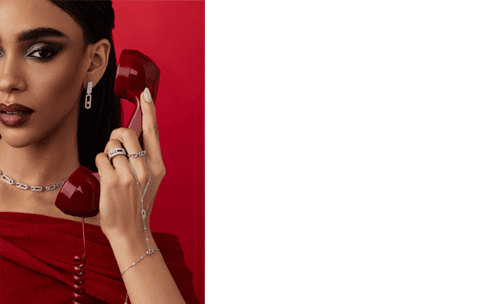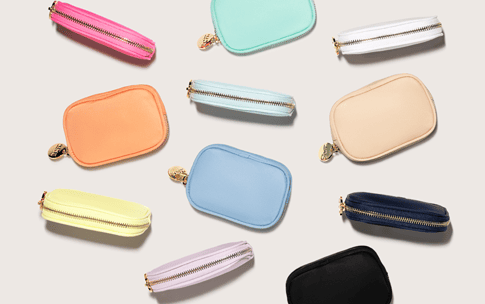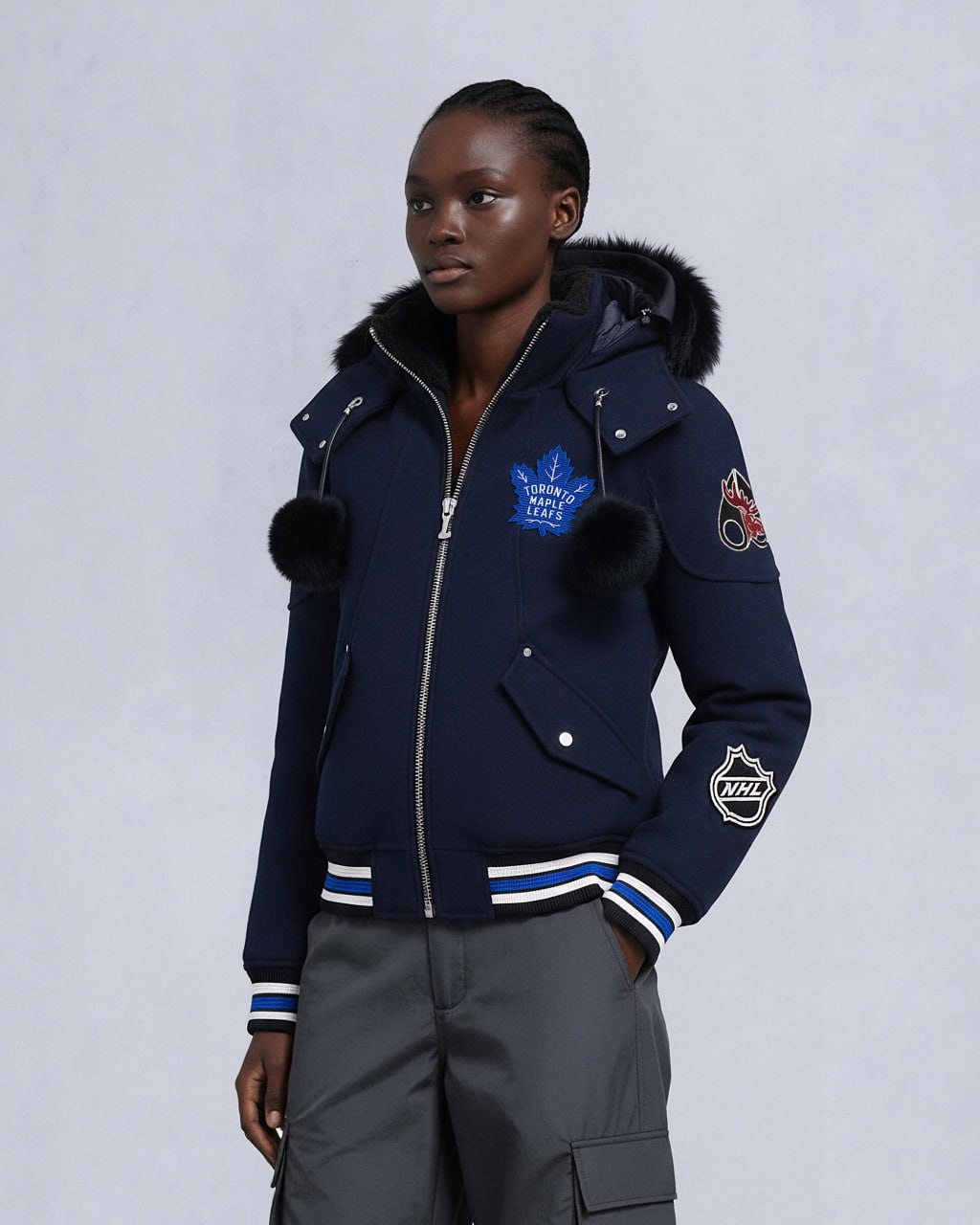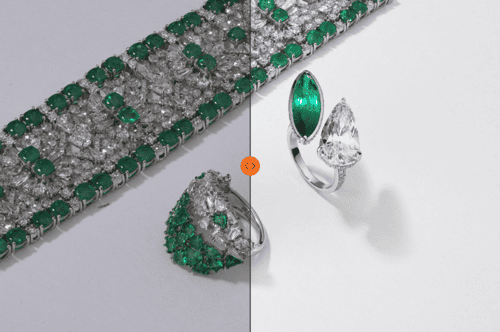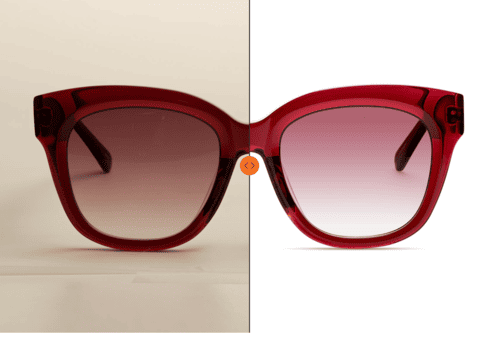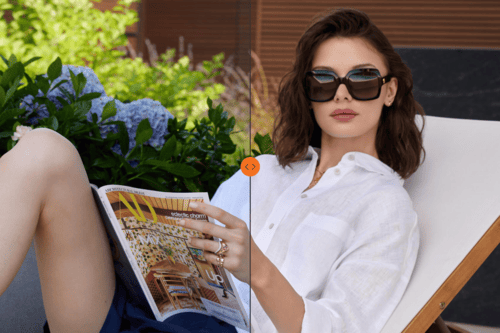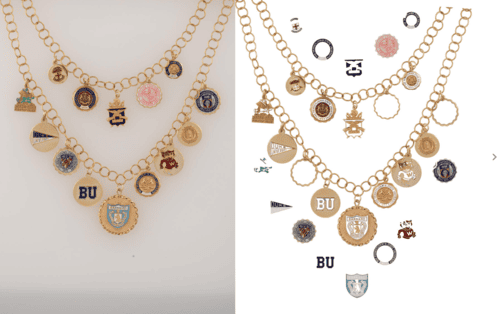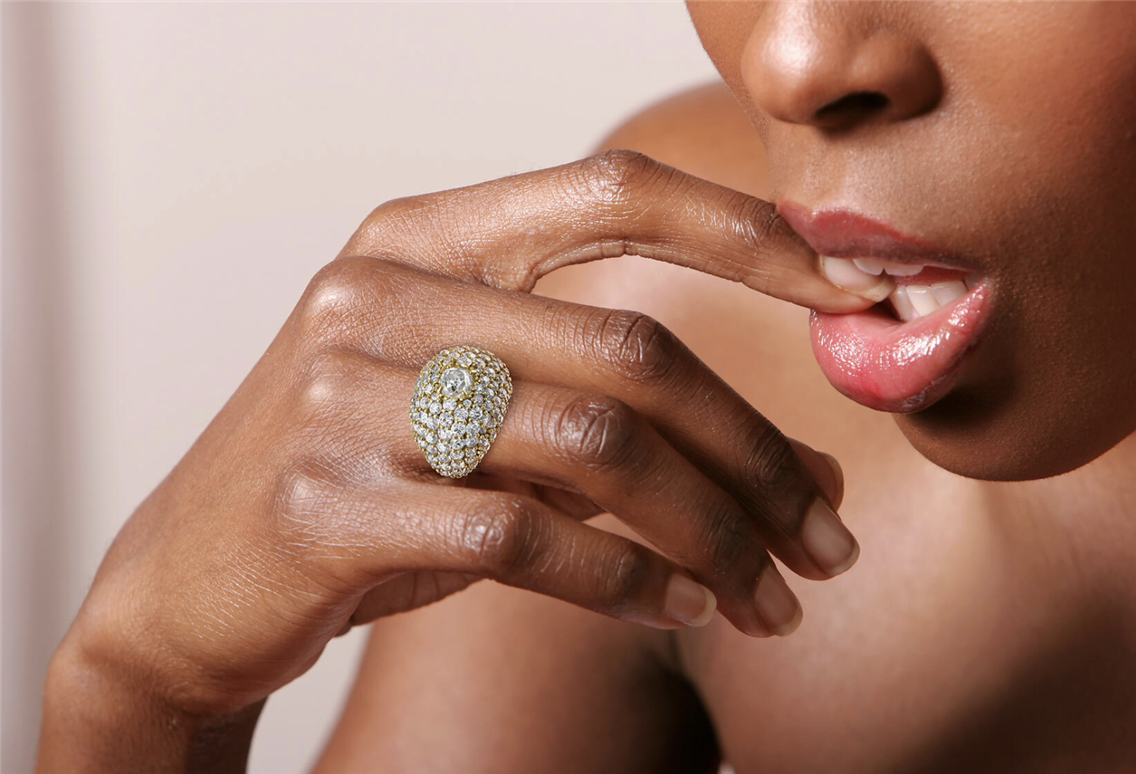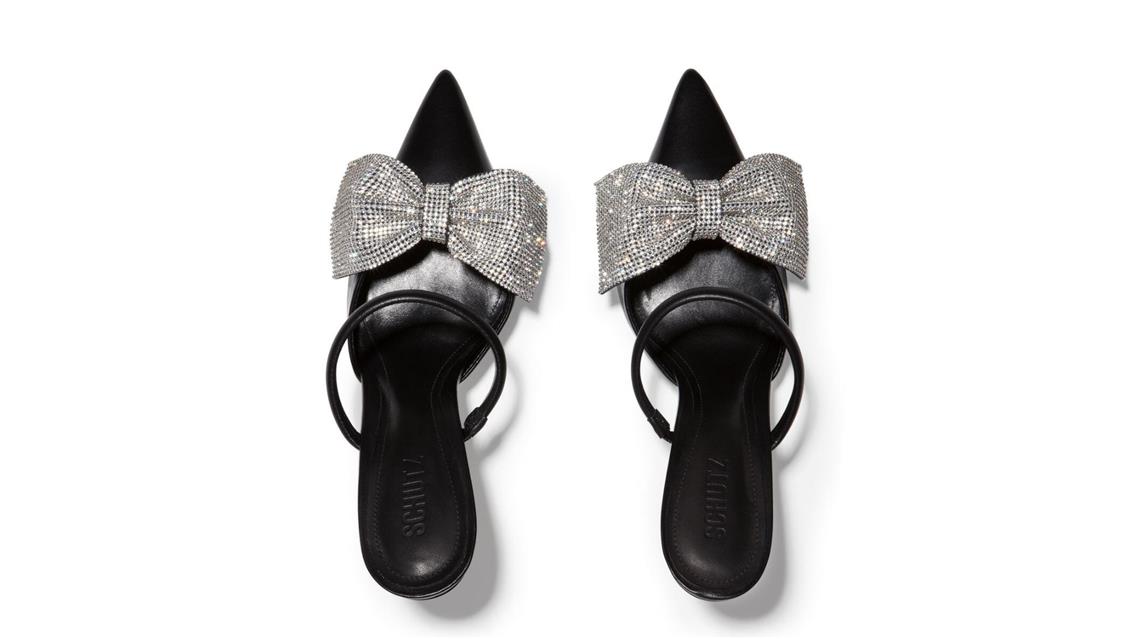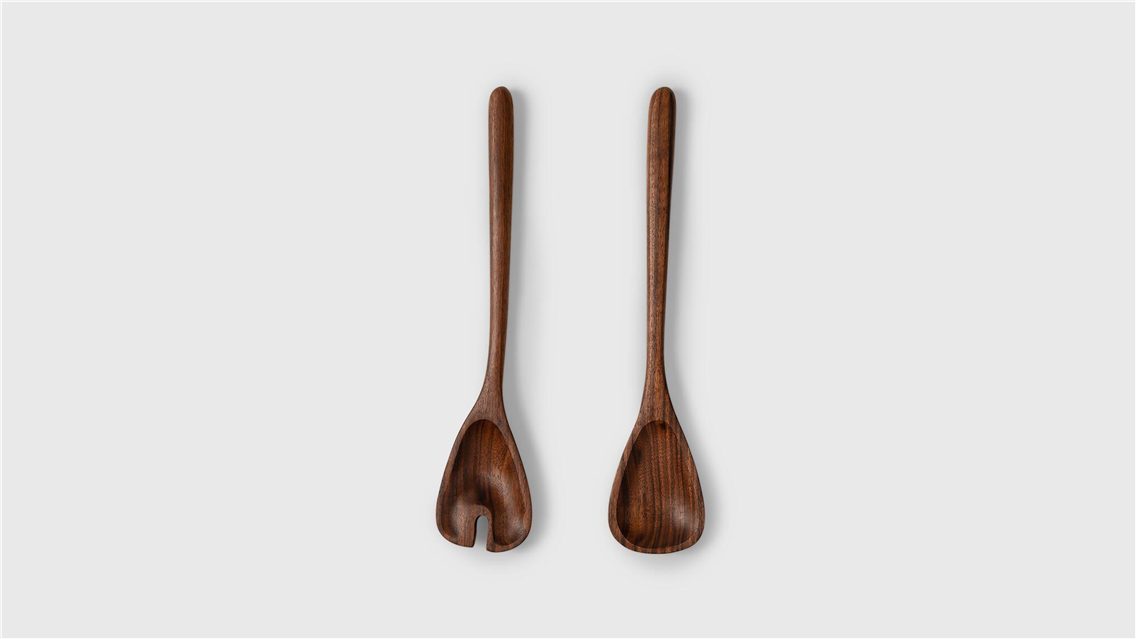7 Skincare & Cosmetics Brands Redefining Visual Marketing Strategies in Beauty Business

Why Should Beauty Brands Have a Strong Visual Marketing Strategy?
In the world of beauty, capturing consumer attention is more critical than ever. Studies show that the average attention span of users lasts only eight seconds, making it essential for brands to engage potential customers quickly and effectively. Visual marketing plays a pivotal role in this, as images often communicate messages more powerfully than words. A strong visual marketing strategy can significantly enhance brand recognition, increase website traffic, and ultimately drive sales.
Visual content marketing allows beauty brands to inform, educate, and attract consumers through captivating imagery that resonates with their target audience. From striking product photography to cohesive branding across social media platforms, the visual elements of a marketing strategy are crucial for establishing an emotional connection with consumers. As the beauty industry evolves, brands that prioritize innovative and appealing visual content will stand out in a crowded marketplace.
The beauty industry is witnessing a transformation driven by innovation, sustainability, and a deeper understanding of consumer needs. Here’s a comprehensive look at some of the most influential brands shaping the current beauty landscape with their visual marketing: The Ordinary, Byredo, Rare Beauty, Aesop, Clinique, and Estée Lauder.
1.The Ordinary: Crafting a Transparent Brand Image Through Visual Content
The Ordinary has established a powerful visual marketing strategy that effectively communicates its brand ethos of simplicity, transparency, and education. This approach is evident across various platforms, including photography, video content, social media engagement, website design, and offline experiences.
At the core of The Ordinary's visual identity is its minimalist product photography. Each item is presented against a plain backdrop, allowing the sleek design of the packaging to shine. High-resolution images showcase the glass bottles and droppers, emphasizing the clinical and straightforward nature of the brand. Close-up shots highlight key ingredients, inviting consumers to appreciate the quality and efficacy of each product. This focus on clarity resonates with customers who are increasingly drawn to authenticity over high-glamour imagery.

The Ordinary effectively utilizes video content to enhance its storytelling capabilities. Short educational videos demonstrate how to use products correctly, often featuring skincare experts or influencers who provide insights on application techniques. These videos are designed to be informative rather than promotional, fostering a sense of trust and relatability among viewers. Additionally, The Ordinary occasionally shares behind-the-scenes footage that showcases the development process of their products, reinforcing their commitment to transparency.

On platforms like Instagram, The Ordinary employs a cohesive visual strategy that includes both static images and dynamic video content. The brand's feed features a mix of product shots, ingredient spotlights, and user-generated content. By reposting images from real customers using their products, The Ordinary creates an authentic community around its brand. This strategy not only showcases how individuals incorporate The Ordinary into their skincare routines but also builds trust through relatable experiences.
The Ordinary’s website serves as a central hub of its visual marketing strategy. It features a clean design that prioritizes product listings with high-quality images showcasing each item from multiple angles. The intuitive layout allows customers to easily navigate through collections while providing detailed descriptions that emphasize the ingredients used in each product. Educational graphics are also integrated throughout the site, helping consumers understand how to layer products effectively or highlight specific benefits visually.

In its marketing campaigns, The Ordinary opts for authenticity by featuring real people instead of high-glamour models. This approach emphasizes inclusivity and relatability, showcasing a diverse range of skin types and concerns through genuine photography. The campaigns often focus on real results rather than aspirational beauty standards, aligning with the brand's mission to empower consumers with knowledge about their skincare choices.

Overall, The Ordinary’s visual marketing strategy effectively combines clarity with educational elements across various platforms. By utilizing minimalist photography, engaging video content, authentic user-generated visuals, and a user-friendly website design, the brand successfully communicates its values of transparency and efficacy in skincare. This focused approach not only attracts consumers but also empowers them with knowledge about their skincare choices, solidifying The Ordinary's position as a leader in conscious skincare.
2.Rhode: Beauty Marketing Around Mindblowing Visual Content

| Rhode, the minimalist skincare brand founded by Hailey Bieber, has quickly gained traction since its launch, becoming a prominent name in the beauty industry. With a strong emphasis on visual content and authentic engagement, Rhode exemplifies how effective marketing strategies can drive brand growth. Rhode consistently employs a soft, neutral color palette featuring shades like beige, cream, and pastel pinks. This choice creates a soothing and premium feel that resonates with its target audience. The subtlety of these tones reinforces the ideas of simplicity and purity, which are central to the brand’s philosophy. The brand’s product photography is a masterclass in minimalism. Each shot is well-crafted and focused on the product itself, avoiding unnecessary distractions. This clarity highlights the quality and design of Rhode’s packaging while ensuring that the message remains straightforward and impactful. A significant portion of Rhode’s imagery incorporates negative space, which ensures that the focus remains on the product while creating a sense of calm and balance. This design element resonates deeply with skincare consumers who appreciate a serene visual experience. |
Rhode extends its sensory appeal through visuals that engage multiple senses. The brand effectively highlights product textures through close-up shots of creamy serums or glossy balms, inviting viewers to imagine how the products feel on their skin. Rhode’s visuals often feature props like food textures, water droplets, and soft fabrics. These elements enhance the aesthetic while evoking feelings. A standout example of Rhode's creative marketing strategy is its collaboration with Krispy Kreme for the limited edition Strawberry Glaze Peptide Lip Treatment. The advertisement features Hailey Bieber hopping into a red car with a box of Krispy Kreme donuts while casually applying the lip treatment. This collab transcends traditional advertising by creating an experience that evokes nostalgia and excitement around both brands. It positions the lip treatment not just as a beauty product but as part of a lifestyle that celebrates indulgence and fun, seamlessly merging two seemingly unrelated products — food and beauty — through their appetizing textures. | 
|







Hailey Bieber's active involvement in content creation is a major asset for Rhode. Her genuine enthusiasm and personal connection to the products add credibility, making followers feel like they are part of an exclusive community. Sharing glimpses of product development or everyday moments humanizes the brand and fosters trust among followers. This transparency allows consumers to connect with Rhode on a more personal level.
Rhode actively encourages customers to share their experiences with the products. This strategy builds community while serving as powerful social proof, showcasing real people enjoying Rhode products.





Rhode's success can also be attributed to its consistent tone and aesthetic across all platforms. Every post feels like part of a larger narrative, reinforcing the brand's identity while enhancing engagement rates. This consistency helps build recognition and trust among consumers.
3.The Art of Storytelling in Byredo's Visual Marketing Strategy
Byredo has established itself as a leading luxury fragrance and beauty brand through its innovative visual marketing strategies that emphasize storytelling, minimalism, and inclusivity. Founded in 2006 by Ben Gorham, Byredo has successfully captured the attention of modern consumers, particularly millennials and Gen Z, by creating a unique brand experience that transcends traditional fragrance marketing.
At the heart of Byredo's visual identity is a minimalist aesthetic that resonates with contemporary consumers. The brand’s packaging is sleek and understated, often featuring simple black-and-white designs that allow the fragrances themselves to take center stage. This approach aligns with the modern “less is more” trend, appealing to those who value authenticity and quality over excess. By focusing on clean lines and elegant typography, Byredo ensures that its products feel like luxury items while remaining accessible to a diverse audience.
Byredo’s marketing strategy is heavily grounded in storytelling, using evocative names and descriptions for its fragrances that invite consumers to connect emotionally with the products. For example, the fragrance ‘Mojave Ghost’ tells the story of a flower that thrives in the arid Mojave Desert, evoking imagery of resilience and beauty. This narrative-driven approach not only enhances the allure of each scent but also makes it easier for consumers to envision themselves within the story, creating a deeper connection to the product.

| On social media platforms like Instagram, Byredo employs a cohesive visual strategy that combines high-quality product photography with artistic imagery. The brand often shoots merchandise against simple backdrops, allowing the products to shine without distractions. This clean composition is complemented by thoughtful captions that further enhance the storytelling aspect of their marketing. Byredo also collaborates with influential photographers, studios, and artists to create visually stunning campaigns that resonate with their target audience. |
 |
Byredo leverages video content to enhance its storytelling capabilities. Campaigns like ‘Eyes Closed’ encapsulate sensory experiences through visually rich narratives that explore themes of connection and emotion. These videos often feature diverse models and artistic visuals that reflect the brand's commitment to inclusivity and representation. By using video as a medium for storytelling, Byredo effectively engages consumers on a deeper level, inviting them into the world of their fragrances.
The brand consciously strays away from hypersexualized advertising, opting instead for authentic representations that resonate with modern consumers who seek brands reflecting their values. This approach not only broadens Byredo's appeal but also fosters a sense of community among its audience.

Beyond digital engagement, Byredo creates an exceptional in-store experience that reinforces its visual identity. The boutiques are designed to be immersive spaces where customers can explore fragrances in a thoughtfully curated environment. Each store reflects the brand’s aesthetic values, combining scent, design, and atmosphere to create a memorable shopping experience. This holistic approach caters to consumers’ desires for meaningful interactions with brands.
Byredo’s visual marketing strategy effectively combines minimalism with rich storytelling and inclusivity. Through clean aesthetics, evocative imagery, engaging video content, and authentic representation in advertising campaigns, Byredo has successfully positioned itself as a luxury brand that resonates with modern consumers.
4.Rare Beauty: Mastering Visual Content for Authentic Engagement
Rare Beauty has emerged as a trailblazer in the beauty industry, not only for its innovative products but also for its exceptional visual marketing strategies. Founded by Selena Gomez, the brand is dedicated to promoting self-acceptance and mental health awareness, and this mission is beautifully reflected in its visual content across various platforms. From product photography to user-generated content (UGC), Rare Beauty employs a diverse range of visual elements to connect with its audience authentically.
Rare Beauty's product photography focuses on authenticity and relatability rather than the polished, high-glamour images often seen in traditional beauty marketing. The brand showcases its products in everyday settings, often featuring a diverse set of individuals applying makeup in casual environments. This approach allows potential customers from virtually any background to envision themselves using the products in their daily lives, fostering a sense of connection. The product images are typically bright and inviting, highlighting the vibrant colors of the makeup while maintaining a clean aesthetic. This minimalist yet engaging style reinforces the brand’s message that beauty should be accessible and enjoyable. | 
|
Video content plays a crucial role in Rare Beauty's visual strategy, especially on platforms like TikTok and Instagram Reels. The brand produces engaging tutorials that demonstrate how to use its products effectively, often featuring influencers and real customers sharing their experiences. These videos are designed to be educational and entertaining, aligning perfectly with the platform's emphasis on authenticity.
Rare Beauty actively encourages user-generated content (UGC), inviting customers to share their experiences with the brand’s products. This strategy not only enhances engagement but also fosters a sense of community among users. The brand frequently reposts UGC on its social media platforms, showcasing real people using their products in authentic ways.
Campaigns like #WeAreRare have successfully encouraged users to share personal stories of self-acceptance and growth, reinforcing Rare Beauty's mission while creating a rich tapestry of diverse voices within its community. This emphasis on real experiences resonates deeply with consumers who seek brands that reflect their values.
In addition to product-focused visuals, Rare Beauty incorporates lifestyle imagery that celebrates individuality and authenticity. These visuals often depict diverse individuals in candid moments — laughing, applying makeup, or simply enjoying life — highlighting the idea that beauty is about feeling good in one’s skin rather than conforming to unrealistic standards.
This lifestyle approach is particularly effective in conveying the brand’s ethos of self-love and acceptance. By showcasing real-life scenarios where makeup enhances rather than masks individuality, Rare Beauty positions itself as a champion of authenticity in an industry often criticized for promoting unattainable ideals.




Rare Beauty collaborates with a diverse array of influencers who embody the brand's values. These partnerships are integral to its visual marketing strategy, allowing for dynamic content creation that showcases products in relatable contexts. Influencers often share personal stories about their experiences with Rare Beauty products, further enhancing authenticity.

Rare Beauty has successfully mastered the art of visual content marketing by prioritizing authenticity, inclusivity, and community engagement. Through relatable product photography, engaging video tutorials, user-generated content, lifestyle imagery, mobile optimization, and strategic influencer collaborations, the brand effectively communicates its core values while resonating deeply with modern consumers.
5. Aesop: How Visual Marketing Strategy Makes It Favorite Brand Among Hipsters
Aesop has carved out a unique niche in the beauty industry, becoming a beloved brand among hipsters and discerning consumers alike. This appeal can be largely attributed to its innovative visual marketing strategy, which seamlessly combines minimalist design, storytelling, and an immersive brand experience.
At the core of Aesop's identity is a commitment to quality and authenticity. The brand embraces a modern apothecary aesthetic, characterized by its iconic amber glass bottles and simple labeling that resembles vintage pharmacy products. This choice not only reflects a sense of nostalgia but also positions Aesop as a sophisticated yet approachable brand. The understated design speaks to consumers who appreciate craftsmanship and seek products that align with their values of sustainability and ethical sourcing. The mood conveyed through Aesop's visuals is one of calm sophistication. The brand’s imagery often evokes a sense of tranquility and mindfulness, inviting consumers to indulge in self-care rituals. This atmosphere is achieved through carefully curated color palettes — muted earth tones and soft neutrals dominate the visuals—creating an inviting backdrop that complements the luxurious nature of the products. | 
|
Aesop’s product photography is a standout feature of its visual strategy. The brand employs still life compositions that highlight its products in artistic arrangements, often incorporating natural elements such as stones, plants, or textured fabrics. These creative photographs do more than showcase the product; they tell a story about the ingredients and the experience of using them. This artistic approach elevates the perception of the products, making them feel like essential components of a curated lifestyle rather than mere cosmetics.




In addition to product-focused visuals, Aesop effectively incorporates lifestyle imagery featuring models in serene settings — think lush gardens or elegantly designed bathrooms — using Aesop products as part of their daily routines. These images humanize the brand, allowing consumers to envision themselves in these moments of self-care and relaxation.
The models chosen for these visuals reflect diversity and authenticity, reinforcing Aesop's commitment to inclusivity. By showcasing real people engaging with their products in genuine scenarios, Aesop fosters a deeper connection with its audience.

Aesop’s social media presence is characterized by its captivating visual storytelling. On platforms like Instagram, the brand curates a visually stunning feed that combines product shots, lifestyle imagery, and artistic photography that aligns with the brand’s overall aesthetic. Each post is thoughtfully crafted to engage and inspire the audience, creating a seamless blend of artistry and brand identity.
The use of storytelling through visuals on social media allows Aesop to engage its audience meaningfully. Captions often provide insights into ingredients or rituals associated with each product, further enriching the visual experience with educational content.






Video content is another powerful tool in Aesop’s visual arsenal. The brand produces short films that delve into the stories behind specific products or ingredients. These videos often feature artistic cinematography that captures the essence of Aesop's philosophy — focusing on nature, craftsmanship, and mindfulness.
For example, a video might showcase the process of sourcing ingredients from around the world or highlight a serene moment where someone uses an Aesop product as part of their daily routine. This immersive storytelling approach allows viewers to connect emotionally with the brand while reinforcing its values.
Aesop extends its visual marketing strategy into its physical retail spaces. Each store is designed to be an immersive environment that reflects the brand's values and aesthetics. Thoughtfully curated interiors feature natural materials, muted color palettes, and clean lines that create a harmonious shopping experience.



Aesop’s visual marketing strategy effectively combines minimalist design with engaging storytelling across various platforms. Through striking product photography, immersive video content, user-generated visuals, lifestyle imagery, and a cohesive social media presence, Aesop successfully communicates its brand values while fostering authentic connections with consumers.
6. Clinique: How Visual Marketing Strategy Captivates Modern Beauty Enthusiasts
Clinique has established itself as a trusted name in the cosmetics industry, known for its dermatologist-developed skincare and makeup products. The brand's visual marketing strategy plays a pivotal role in its success, effectively communicating its commitment to scientific approach and safety. By leveraging a combination of artistic photography, lifestyle imagery, and influencer collaborations, Clinique has successfully engaged a diverse audience while reinforcing its brand identity.
At the heart of Clinique’s identity is a dedication to creating effective, allergy-tested, and fragrance-free products. Founded in 1968 as the first dermatologist-created prestige beauty brand, Clinique emphasizes science-backed formulations that cater to various skin types. This commitment to quality and safety is reflected in every aspect of its visual content, which aims to convey trustworthiness and expertise.
Clinique’s visual identity is characterized by a clean, modern aesthetic that exudes sophistication and a scientific approach. The brand often employs a color palette dominated by soft pastels and whites, creating an inviting atmosphere that resonates with consumers seeking gentle yet effective beauty solutions. This mood is enhanced by sleek typography and minimalistic design elements that allow the products to take center stage.

Clinique’s product photography showcases its cosmetics in a visually appealing manner. The brand utilizes clean backgrounds to highlight the iconic packaging of its products, such as the signature green bottles and jars. These images often feature artistic compositions that incorporate natural elements, such as flowers or fruits, emphasizing the brand’s commitment to using high-quality ingredients.
The photography not only highlights the products but also conveys a sense of care. By presenting its offerings in an aesthetically pleasing way, Clinique appeals to consumers who appreciate beauty as an experience rather than just a transaction.
Clinique effectively incorporates imagery with models. These visuals often depict diverse individuals using Clinique products in relatable settings — think sunlit bathrooms or outdoor spaces. This approach humanizes the brand and allows consumers to envision themselves incorporating these products into their daily routines.
The models chosen for these visuals reflect a range of ages and ethnicities, reinforcing Clinique’s commitment to inclusivity. By showcasing real people engaging with their products in genuine scenarios, Clinique fosters a deeper connection with its audience.
Clinique effectively utilizes social media platforms like Instagram and TikTok to create curated visual experiences that engage followers. The brand’s social media feed features a harmonious blend of product shots, lifestyle imagery, and influencer content — all presented in a cohesive manner that reflects Clinique's aesthetic.
Through visually appealing imagery and compelling storytelling, Clinique creates an inviting online presence that encourages interaction. Captions often provide insights into product benefits or highlight the natural ingredients used, further enriching the visual experience with educational content.





Clinique has embraced collaborations with content creators to amplify its visual marketing efforts during product launches. For instance, when launching the Black Honey lip product, Clinique partnered with influencers who embody the brand's values and aesthetics. These creators produce authentic content that showcases the product in use, providing followers with relatable demonstrations of how to incorporate it into their beauty routines.
This strategy not only broadens the reach of product launches but also taps into the trust that influencers have cultivated with their audiences. By leveraging user-generated content alongside professional visuals, Clinique enhances its authenticity while engaging a wider demographic.

Clinique remains a benchmark for excellence in cosmetics branding and marketing — demonstrating how thoughtful visual content can elevate customer experiences and reinforce the brand's sophisticated reputation in an increasingly competitive market.
7. Estée Lauder: How to Rejuvenate a Beauty Brand with Visual Marketing Strategy
Legacy brands often face the challenge of staying relevant while maintaining their prestige. Estée Lauder, a household name in luxury beauty, has masterfully rejuvenated its brand through a refined visual marketing strategy — balancing heritage with modern appeal.
At the heart of Estée Lauder's identity is a dedication to quality and innovation. Founded in 1946, the brand has always been synonymous with luxury and sophistication, focusing on high-performance products that cater to the diverse needs of its customers. This commitment is reflected in its visual content, which aims to convey trustworthiness and expertise. Estée Lauder has always been synonymous with sophistication and classic elegance, but in recent years, it has embraced contemporary minimalism.
- Refined color palettes: Soft gold, deep navy, and white remain at the core of its branding, reinforcing luxury.
- Updated typography: Sleek, modern fonts replace outdated styles while maintaining recognizability.
- Subtle but powerful packaging refresh: The brand periodically refines its product packaging—never drastically, but enough to signal modernity to younger consumers.
Lesson for brands: Update your visuals strategically — maintain brand equity while adapting to current aesthetic trends.
Estée Lauder’s visual identity is characterized by elegance and sophistication. The brand employs a rich color palette that includes deep jewel tones and soft pastels, creating an inviting atmosphere that appeals to consumers seeking premium beauty solutions.


Brand understands that luxury is about experience, not just products. The brand has leaned into cinematic storytelling, using high-quality, editorial-style photography and immersive video campaigns.
- Soft-focus, light-filled imagery exudes radiance, enhancing the perception of skincare and beauty benefits.
- Slow-motion product videos elevate the sensory experience — whether it's a serum dropper releasing a golden elixir or a lipstick gliding smoothly.
- Close-ups of glowing, natural skin help consumers visualize the results, creating aspirational imagery.
Takeaway: Beauty brands must move beyond product shots and invest in storytelling-driven visuals that connect emotionally.
One of the most significant shifts in Estée Lauder's marketing approach is its commitment to showcasing a wide range of skin tones and ages in its campaigns. The brand recognizes the importance of representation and inclusivity, which resonates deeply with today’s consumers who seek authenticity in the brands they support. Campaigns like "My Shade, My Story" have garnered millions of views and highlighted the brand's dedication to inclusivity by featuring diverse models sharing their personal beauty journeys.

While maintaining its elite positioning, Estée Lauder has embraced social relevance through influencer partnerships.
- Global brand ambassadors like Kendall Jenner and Karlie Kloss bridge the gap between high fashion and relatable beauty.
- Micro-influencers and beauty creators showcase products in real-life applications, providing an authentic feel.
- Cross-platform visibility ensures content resonates with both luxury consumers and younger digital-first audiences.
Tip: Legacy brands should use a mix of traditional celebrity endorsements and influencer-generated content to create a diverse yet cohesive visual identity.

Final thoughts: Estée Lauder’s success in rejuvenating its brand lies in its ability to blend heritage with innovation through visual storytelling. By embracing high-end aesthetics, digital-first content, influencer collaborations, and exclusivity strategies, the brand remains aspirational yet accessible to a new generation of beauty consumers.
Key Takeaways for Crafting Visual Marketing Strategy for Beauty Brands
In an era where visual marketing dictates brand perception, the success of beauty brands is increasingly tied to how well they tell their story through imagery, design, and digital experiences. The six brands explored—The Ordinary, Byredo, Rare Beauty, Aesop, Clinique, and Estée Lauder—demonstrate different approaches to redefining beauty marketing with visuals.
Here are the essential lessons for brand owners looking to elevate their visual marketing strategies:
1. Authenticity Wins Over Perfection
Consumers today prioritize realness over polished perfection. Brands like The Ordinary and Rare Beauty thrive by featuring unfiltered, everyday beauty rather than aspirational, unattainable ideals.
- Emphasize authenticity in your visuals — show real skin textures, diverse faces, and unfiltered moments.
- Leverage user-generated content (UGC) to create community-driven marketing that feels genuine.
2. Storytelling Through Visuals Creates Deeper Connections
Brands like Byredo and Aesop prove that selling a product isn’t just about showcasing its features — it’s about crafting an emotional narrative.
- Develop a brand story that translates into your visuals — use campaign photography, product descriptions, and packaging to evoke emotions.
- Incorporate cinematic storytelling through high-quality imagery and video campaigns that transport consumers into your brand world.
3. Minimalist Product Photography with a Purpose Enhances Brand Identity
Simplicity, when executed well, can make a brand instantly recognizable. The success of The Ordinary, Aesop, and Byredo stems from their consistent and purposeful minimalist aesthetics.
- Create a distinct visual identity — whether through unique packaging, color schemes, or typography, ensure it aligns with your brand ethos.
- Use whitespace effectively — clean product photography makes products feel premium and modern.
4. Inclusivity & Representation Are Must-Haves
Estée Lauder and Rare Beauty set the standard for inclusive beauty marketing, proving that diverse representation directly impacts consumer trust and brand loyalty.
- Showcase diverse skin tones, ages, and beauty standards in your model photography.
- Move beyond tokenism — representation should be deeply embedded in your brand's DNA, not just a marketing tactic.
5. Luxury Is About Experience, Not Just Price
Brands like Byredo, Aesop, and Estée Lauder elevate their positioning by ensuring that every touchpoint — from packaging to social media visual content — feels like an immersive experience.
- Create a sensory-driven brand experience — combine textures, colors, and storytelling in still life photography to make customers feel something.
- Invest in professional photography — lighting, angles, retouching, and compositions should enhance the perceived value of your products.
The most successful beauty brands aren’t just selling products — they’re selling an experience, an emotion, and a lifestyle. A strategic, well-executed visual identity across all platforms reinforces brand recognition and customer loyalty.
Elevate your brand's visual storytelling!
Explore our guide on crafting a visual marketing strategy and learn how to use visual content to express your brand story and vision, improve engagement, and increase sales!
